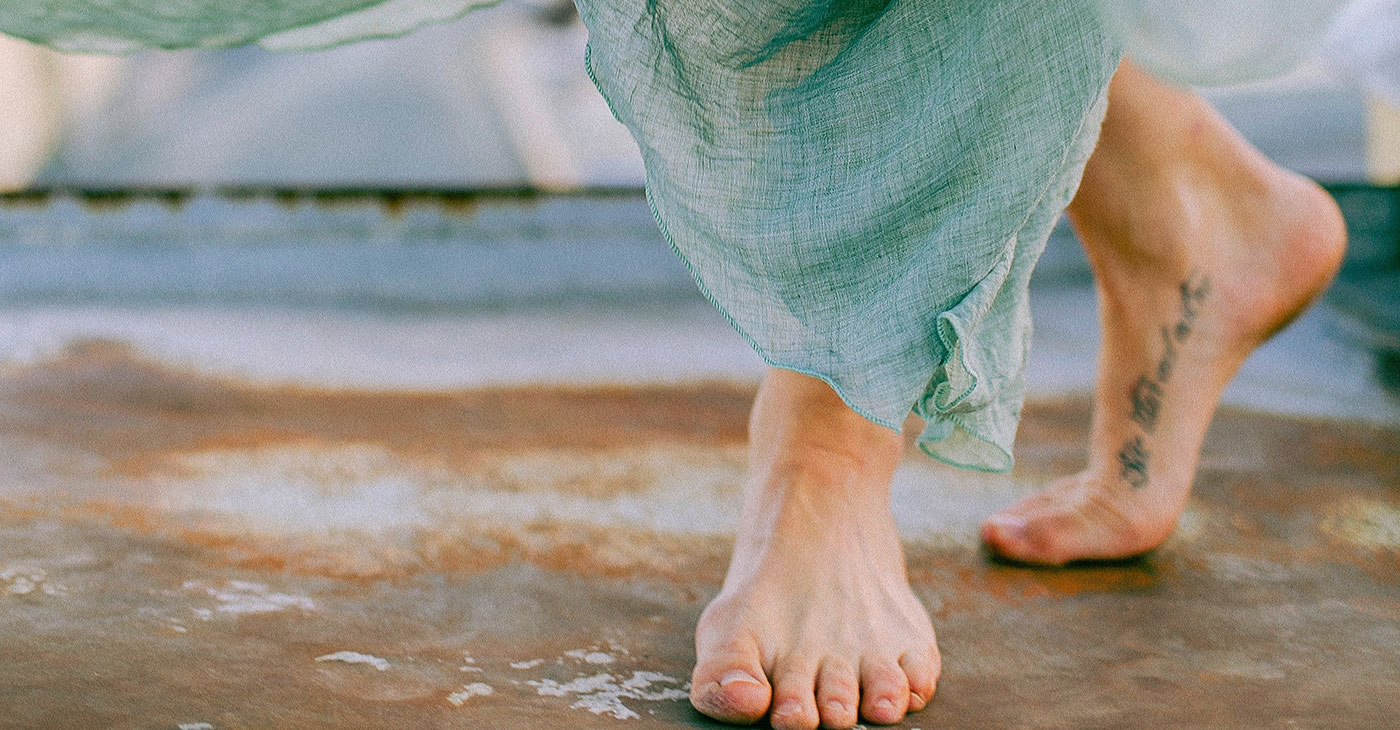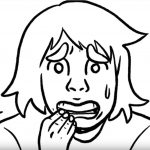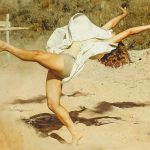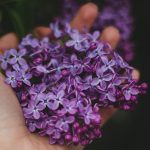In my latest explorations with balls, I have been combining elements of Bartenieff Fundamentals™ with elements of Body Mind Centering ℠. I use ideokinesis to make connections to them and other parts of myself. Like it sounds, use of visual and kinesthetic (movement sensations) and imagery supports the efficient use of neuro-skeletal-muscular patterns.
If you have diabetes or arthritis or pain in your feet the following explorations are especially useful. These sequences can be done sitting, and in that position will provide different sensory information.
I use a small 1-inch ball to roll under my foot (these can be purchased at any dollar store – three to a package). Enjoy these sequences to awaken sensory perceptions and enhance your somatic practice.
Feet are Foundational
Feet are foundational to the standing, weight shifting, walking, climbing process.
The 3-point relationship of my foot creates a tripodic arch on which to stand. By connecting the bony landmarks of my foot to the bony landmarks of my pelvis, I create extra supporting guide wires, or pathways for stability in dynamic alignment and connectivity, which enhances the movement process.
When I stand, I create a connection between my big toe and my pubic bone, my heel to my sitzbone then I connect my baby toe to my hip crest at the back of my pelvis. For more support I also layer in the relationship of my second toe to my pubic ramis – (the bone that connects my pubic bone to my sitz bone).
Light them up
Standing or sitting I imagine these “guidewires”, as beams of light spiraling from my foot to my pelvis and my pelvis to my foot. I can have the light be on a dimmer switch. With pressure, the lights/connections are brighter and more intense. I make the connections by turning the dimmer switch on slowly and deliberately, or by flicking the switch quickly, the connections are instantaneous.
Wake them up
To facilitate awareness of the sensations of your feet and the triangular bony landmark connections in your feet, place a small ball under your right foot.
Play with the connection to your big toe, baby toe and heel, by yielding and pressing the ball into each of these places. You may increase awareness of the tripod by pressing the ball into each of the your 5 toes, then along the arch of your foot, and finally press the ball into your heel.
Roll the ball to your heel, then roll the ball to your baby toe, then back to your heel. Repeat this rolling process from your big toe to your heel. Then repeat the rolling between each of your other toes and heel. Explore pressure and tempo, and notice what feels pleasurable and what may be painful.
Standing on your right foot, feel it spread out. Shift your weight into your left foot and compare how it feels, notice what you notice. How available is your right foot to you now? Repeat the rolling and pressing process on your left foot.
Standing on your right foot, feel it spread out. Shift your weight into your left foot and compare how it feels, notice what you notice. How available is your right foot to you now? Repeat the rolling and pressing process on your left foot.
Notice the sensations after rolling the ball. Notice the soles of your feet. Have they spread out more on the floor? When they do so, you have a broader base of support. By releasing tension in your foot and yielding into gravity, you make your foot more stable and increase your ability to balance or stand on one foot.
Stabilizing and Mobilizing
Place your right heel on the floor and the ball at your toes. Like a wind-shield wiper, roll the ball from your baby toe to your big toe and back. What do you notice? Can you feel anything happening in your hip socket?
Roll the ball along the longitudinal arch again until the ball is at your heel. Place your toes on the floor. Swing your heel in a parabolic fashion side to side. Do you notice the rotation of your leg in your hip socket? What does your standing leg feel like?
What’s your range?
Standing on your left foot, have the ball under your right foot. Roll your right big toe towards your left heel. Then roll through the ball to bring your right heel towards your left big toe. You will be creating and inward arc on the floor. Repeat this rolling inward and outward action until you feel the need to stop. It may be your supporting leg that gives you that information. Then play with rolling the ball forwards and backwards.
What does your working hip feel like as you roll the ball inwards and outwards and backwards and forwards? What does your STANDING LEG feel like?
One more thing. . .
As you shift from one foot to the other – see how the weight flows from your heel, to your baby toe and towards your big toe, creating a spirilic action. So every step we take, every stair we climb our knee follows our foot and our pelvis moves over top and is connected to our foot.
OK, one more thing
Walk. If you have a tendency to be passive in your weight you may slouch into your pelvis, and not pick your feet up. This creates a plodding, heavy step which may cause tripping, and falling. Layer in your awareness of breathing (see previous articles on breath).
What happens when you notice your breath as you walk. What happens if you exhale on each transfer of weight? Remember – when in doubt BREATHE OUT.
Becoming aware of breath work and bony landmark connectivity in such activities as climbing stairs, getting in and out of bed, and in and out of a car enhances our whole body connectivity. When I pay attention, listen and meet myself where I am, I find my sensing self responding more effectively. I move just as well as I allow myself time to move.
A somatic practice is one where you pay attention to your whole self when moving. Noticing what happens to your breath, to your knee, to your left big toe when you do a big stretch to the side. I see how much energy I have today – I meet my limitations and honour where I am.
I finish with another thought, I quote from my May 6 meditation
Just as so many of the mystics have taught us, doing what you’re doing with care, presence, and intention is prayer, the very way to transformation and wholeness. As other master teachers have taught in many forms, “When we walk, we walk; when we chop wood, we chop wood; when we sleep, we sleep.” As you know, this is much harder than it first seems.
Fr. Richard Rohr O.F.M.











